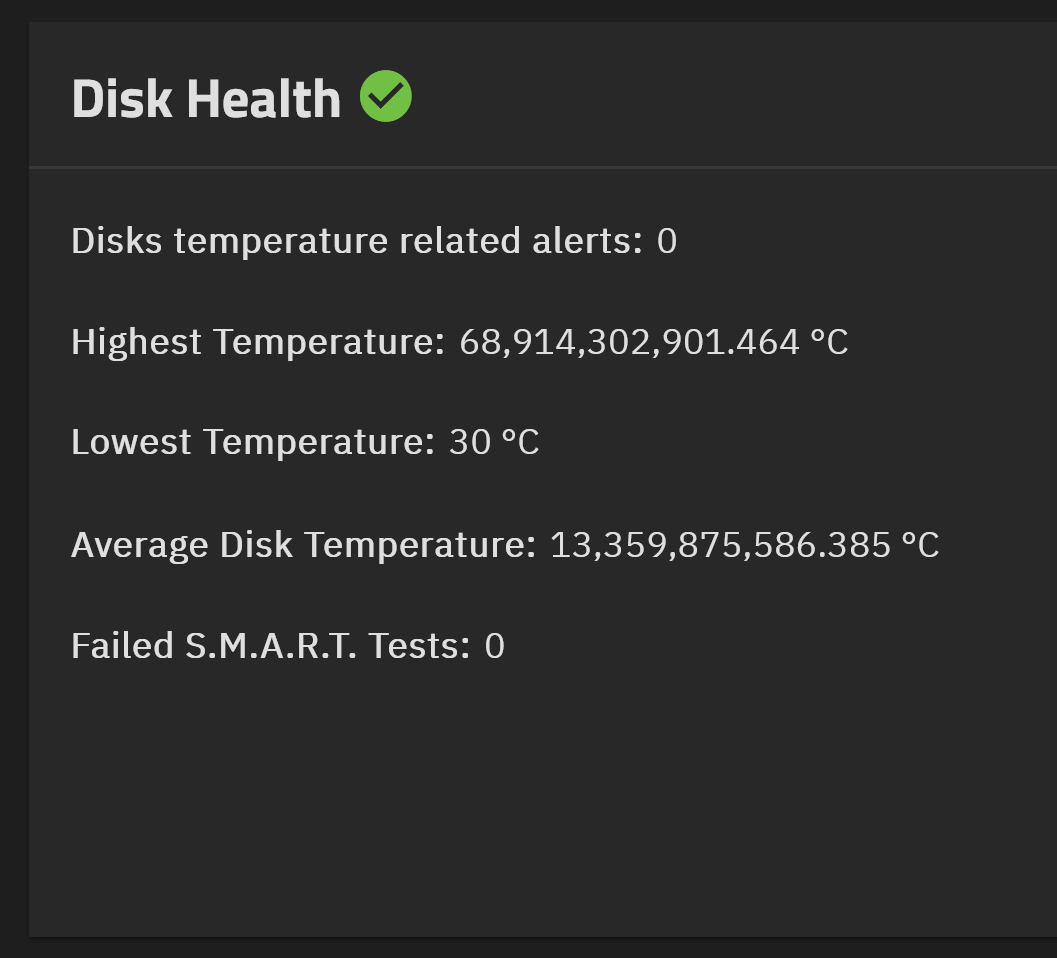We found the guy responsible of the climate change.
TrueNAS

Welcome to the unofficial TrueNAS community!
Here for all things TrueNAS whether you need help with your core, scale, or enterprise edition setups or if you just want to discuss random stuff pertaining to TrueNAS!
Useful Links:
TrueNAS:
Truecharts:
Main MOD: @Sleeping@programming.dev
Whoops, you found me. :P
Dude I think your drive achieved nuclear fusion. Congrats man. I assume the Nobel committee will be in touch shortly.
If only it was cold fusion, though...!
The good news is: you can easily achieve fusion at this point.
nuclear reactions be damn
I don’t think that’s what Apple meant by Fusion Drive.
Drive: reports -1 for a test
Application: "Guess the universe is melting"
We should all be worried about your hard drive temps ..
This_is_fine.png
https://en.wikipedia.org/wiki/Chronology_of_the_universe
According to this, that is about as hot as the temperatures that existed during the Hadron epoch, or the time period when the universe was between 20 microseconds and 1 second old.
In physical cosmology, the hadron epoch started 20 microseconds after the Big Bang.[1] The temperature of the universe had fallen sufficiently to allow the quarks from the preceding quark epoch to bind together into hadrons. Initially, the temperature was high enough to allow the formation of hadron/anti-hadron pairs, which kept matter and anti-matter in thermal equilibrium. Following the annihilation of matter and antimatter, a nano-asymmetry of matter remains to the present day. Most of the hadrons and anti-hadrons were eliminated in annihilation reactions, leaving a small residue of hadrons. Upon elimination of anti-hadrons, the Universe was dominated by photons, neutrinos and electron-positron pairs.
I don't want to start making assertions without knowing the specific manufacturer and model of the drive involved, but given that hard drives generally rely upon the existence of electrons to function, which don't exist at that temperature, one might want to keep an eye out for any other potential signs of trouble showing up, like slower access times or unusual noises.
As long as it's not igniting the atmosphere of the planet, it's all good.
Smart passed. He's good.
Right around the time your hard drive becomes a functional Tokomak device.
Disk temperature related alerts: 0
That high number is just over half the temperature of the big bang, so I think you're still golden.
Somewhere between "melting point of steel" and "core of the sun". Granted this is a very wide window but your average disk temp is orders of magnitude higher.
69.000.000.000 °C, obviously
